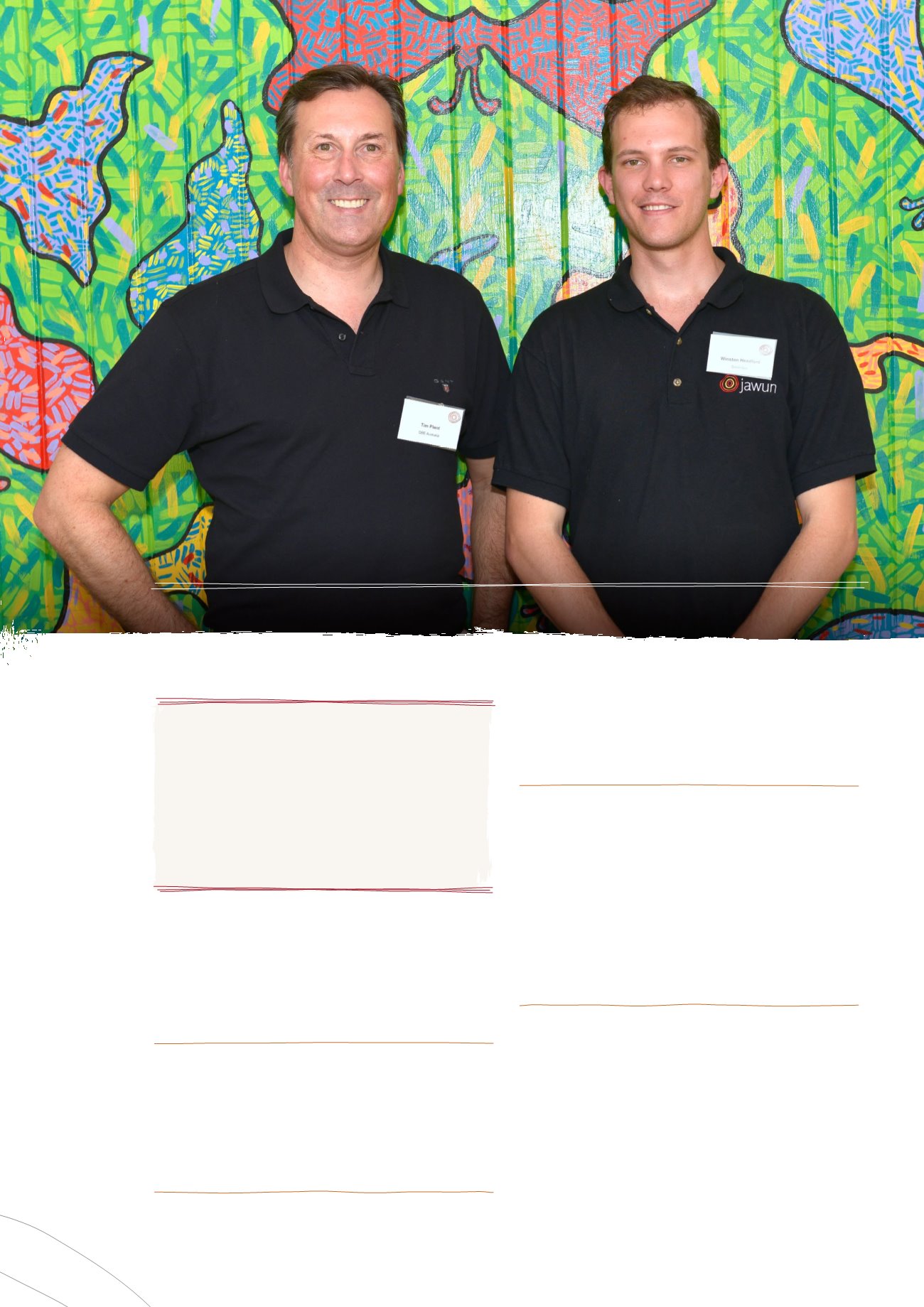

Tim Plant (CEO, QBE Insurance) and Winston Headford (QBE secondee) on the Cape York Executive Visit, 2015.
Photo: David Rennie
I was a Sydney girl, born and bred in the
western suburbs. Before my secondment
I had absolutely nil understanding of
the Indigenous way of life or Indigenous
culture and the problems and issues they
faced. Now I’ve seen it first-hand.
MELISSA GRIGGS,
EX-WESTPAC, NOW SUNCORP,
CAPE YORK 2003 AND 2008–09
The opportunity to live and work in an Indigenous
community for several weeks or months changes
people’s views about Indigenous Australia.
9
Jaimes
Adlington articulated the value of the secondment
program in challenging misconceptions and
unconscious biases:
I think you grow up with certain perspectives of
Indigenous culture conveyed to you, whether it
be through your parents or the media or friends
or school life. But it’s not until you’re dealing with
99% Indigenous people that you realise what
those embedded things are and think, ‘Okay,
that’s not right.’
For Peter Rixon, who works in the Australian Public
Service, his experience of working in an Indigenous
organisation in Shepparton, Victoria, resulted in a
‘180-degree’ shift in perceptions. He explained:
I went on secondment having had negative
experiences of Indigenous communities in the
past. Before Jawun, my suspicions were fed by
what I now know to be ill-formed stereotypes.
Thanks to the Jawun program I have a very
different perspective today. I understand now
the legitimacy of Indigenous aspiration; I see the
need to allow cultural expression. Until I went on
secondment and had this immersion opportunity,
I would never have become an advocate of the
Indigenous community and its ambitions.
For most secondees, their change in perceptions
begins with an
increased awareness
of modern-day
realities for Indigenous people—both the struggles
and the gains. John Williams from Westpac was
seconded in 2013 to The Glen Central Coast Alcohol
and Drug Rehabilitation Centre, where the majority
of clients are Indigenous. ‘I didn’t learn how to play
a didgeridoo,’ he said, ‘but I did learn a lot about
how people fall into drugs.’
CREATING VALUE FOR CORPORATE AND GOVERNMENT PARTNERS 13


















